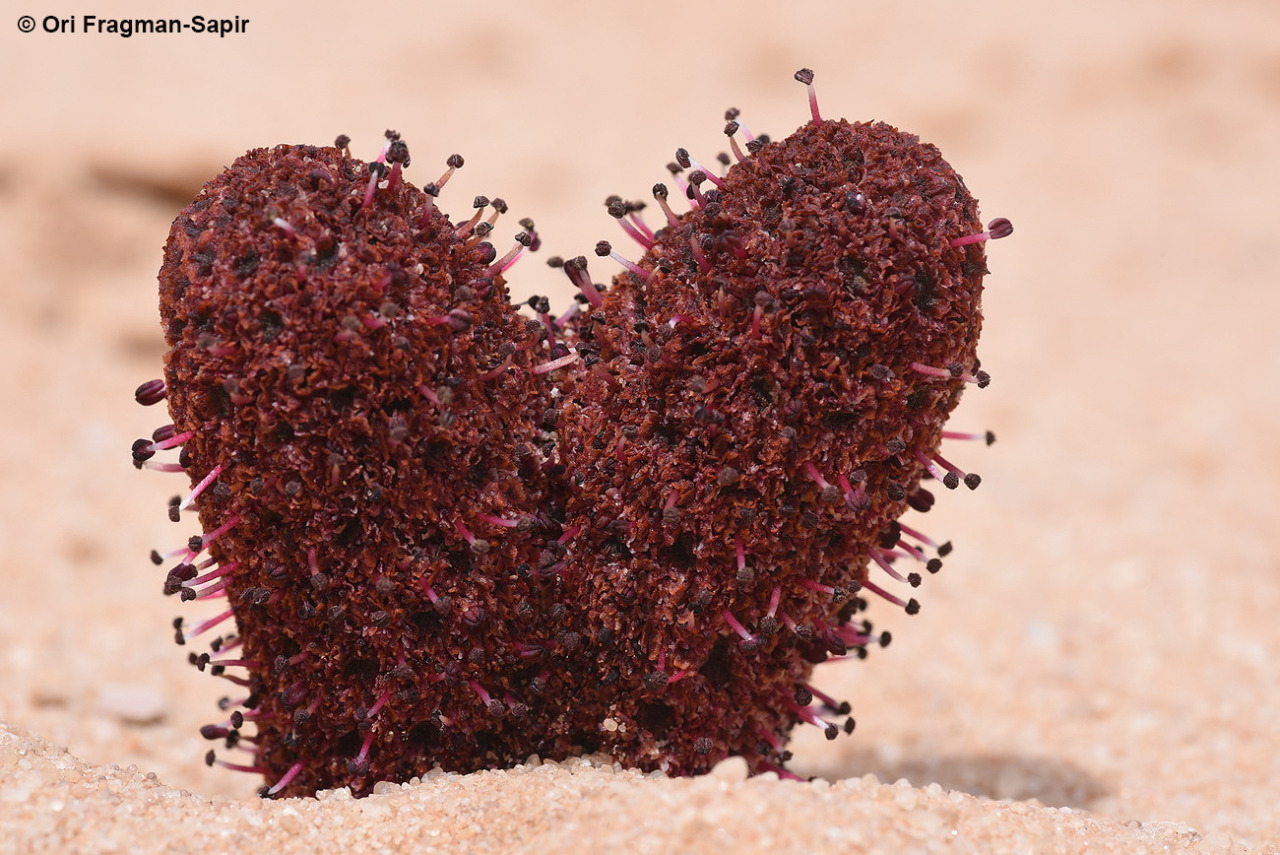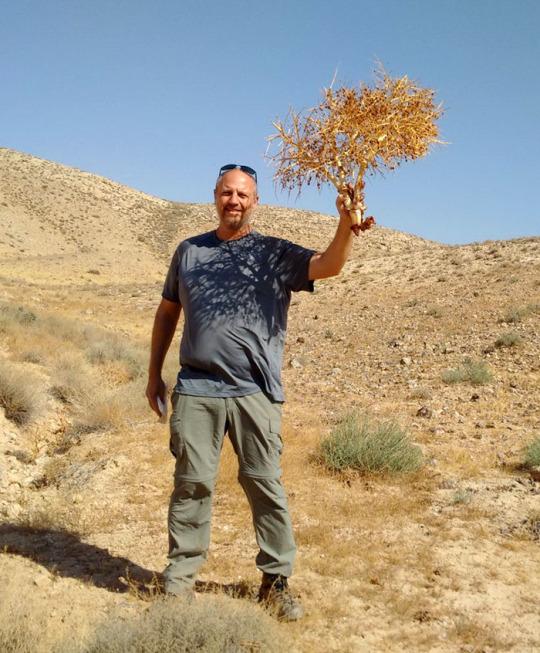What is the Community Taxon?
Every observation with at least one identification has what we call an Observation Taxon. This is the label shown at the top of the observation page and is the taxon that the observations is "filed under" on the tree of life.

The Community Taxon (also sometimes called the Community Identification) is a way to derive a single identification from multiple identifications provided by the community. If an observation has more than one identification, it will also have a Community Taxon. The Observation Taxon will match the Community Taxon unless: (a) the observer has opted out of the Community Taxon, (b) there is an identification of a finer taxon that hasn’t been disagreed with (more on disagreements shortly).

Identifications hang on nodes on the tree of life. An identification adds an agreement with that node and also all of that nodes ancestors back to the root of the taxonomy.

If two identifications are on different branches of the tree of life, they each count as an agreement for the branch they are on and a disagreement for every node on the other branch back to the common ancestor of the two branches.

Each node is scored with the cumulative number of Agreements (i.e. the identifications on it or its descendants), the total number of Disagreements (from identifications on other branches), and something called "Ancestor Disagreements" which we’ll describe shortly.
The Community Taxon is the finest ranked taxon with at least two agreements where the ratio of the number of agreements to the sum of agreements, disagreements, and ancestor disagreements is greater than ⅔.
In contrast, the Observation Taxon will always match the Community Taxon unless:
a) there is just a single identification, then the Observation Taxon will be defined by that identification
b) the observer opts out of the Community Taxon, then the Observation Taxon will be defined by the observers identification
c) there are no disagreements and there is an identifications of descendants of the Community Taxon, then the Observation Taxon will be defined by the finest such identification (because the community likes that a single non-controversial identification being able to ‘move the ball forward’)*
*if that finest identification is of infra-species rank (eg subspecies), the Observation Taxon won't roll forward to that rank from the Community Taxon if that identification was added later (because the community doesn't like what would be Research Grade observations at species rank being rolled forward to Needs ID observations at infra-species rank). However, if the Observation Taxon was initially set at infra-species rank from a single identification, a non-disagreeing identification of an ancestor won't roll the Observation Taxon back to the Community Taxon.
What are Ancestor Disagreements?
So what are Ancestor Disagreements? If one person adds an identification of one node and another person thinks it’s not that but can’t provide an alternative on another branch, they might add an identification of an ancestor of that node. For example, I might add an identification of Seven-spotted Lady Beetle, but you might add an identification of the family lady beetles, which contains that and many other species.

When the Community Taxon was first implemented, any identification made after previous finer identifications in time was implied to be a disagreement with these finer taxa. These ‘implicit ancestor disagreements’ are now labeled as such.

They only disagree with taxa associated with previous finer identifications. Also some bugs were fixed in how the Community ID charts on the observation page handle "implicit ancestor disagreements".

What are Explicit Disagreements?
Because of confusion about whether people were disagreeing or not, we later made ancestor disagreements "explicit". When an identification is made that is an ancestor of the Community Taxon (or the Observation Taxon if there’s only one identification), the identifier is now presented with a choice to indicate whether they are disagreeing with the Community Taxon or not.
If they are not disagreeing, their identification does not count as an ancestor disagreement for the taxon that was the Community Taxon.

And the identification is not labeled as a disagreement:

However, If they are disagreeing, their identification counts as an "explicit ancestor disagreement" with the Community Taxon.

And the identification is labeled accordingly:

Two ways to disagree...
When we implemented this, we thought that ancestor disagreeing should disagree with the entire branch below the disagreeing identification i.e. “I disagree that this is Seven-spotted Lady Beetle and all taxa on the branch between Seven-spotted Lady Beetle and the taxon I have proposed”. Let’s call this the “Branch Disagreement” way to disagree.
We’ve since come to realize that our communication about this was inconsistent and confusing, based on numerous discussions with community members in person and in the Forum. Furthermore, these discussions suggest the community interprets disagreeing as just with the Community Taxon i.e. “I disagree that this is Seven-spotted Lady Beetle but not the whole branch below the taxon I have proposed”. Let’s call this the “Leading Disagreement” way to disagree. We’ve also since realized from the Forum that Leading Disagreement is a more common and less controversial way to disagree than Branch Disagreement.
At the end of this post, we’ll discuss planned changes to improve things moving forward. But for now, let’s try to clarify our communication describing how things are currently behaving to all get on the same page.
Imagine the following sequence of identifications:

Branch Disagreement tallies disagreements as follows:

Which differs from how one would tally disagreements for the Leading Disagreement case:

Notice that this can impact how the Community Taxon is calculated. In this example, Branch Disagreement computes the Community Taxon as Lady Beetles Family:
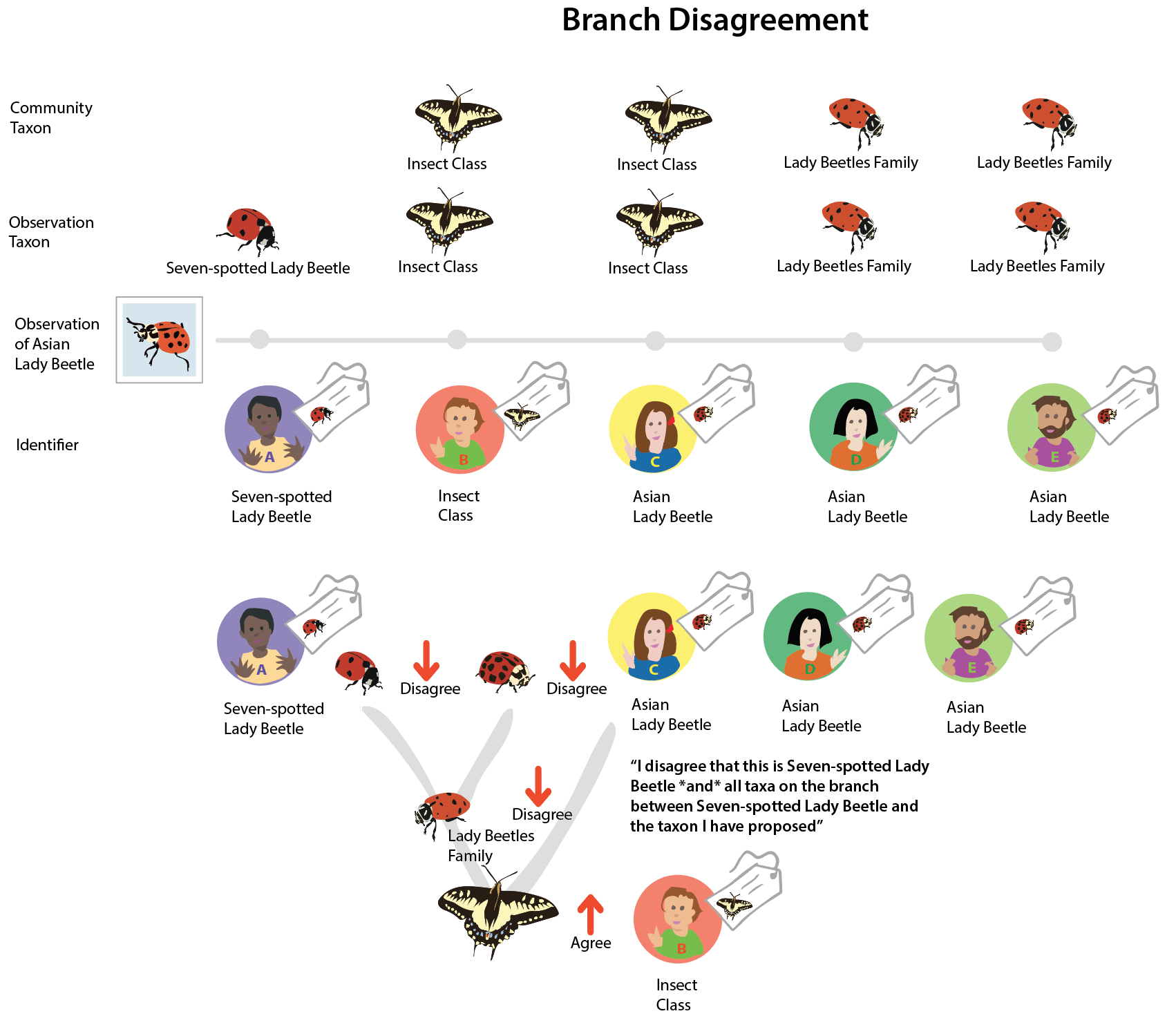
While Leading Disagreement would compute it as Asian Lady Beetle:
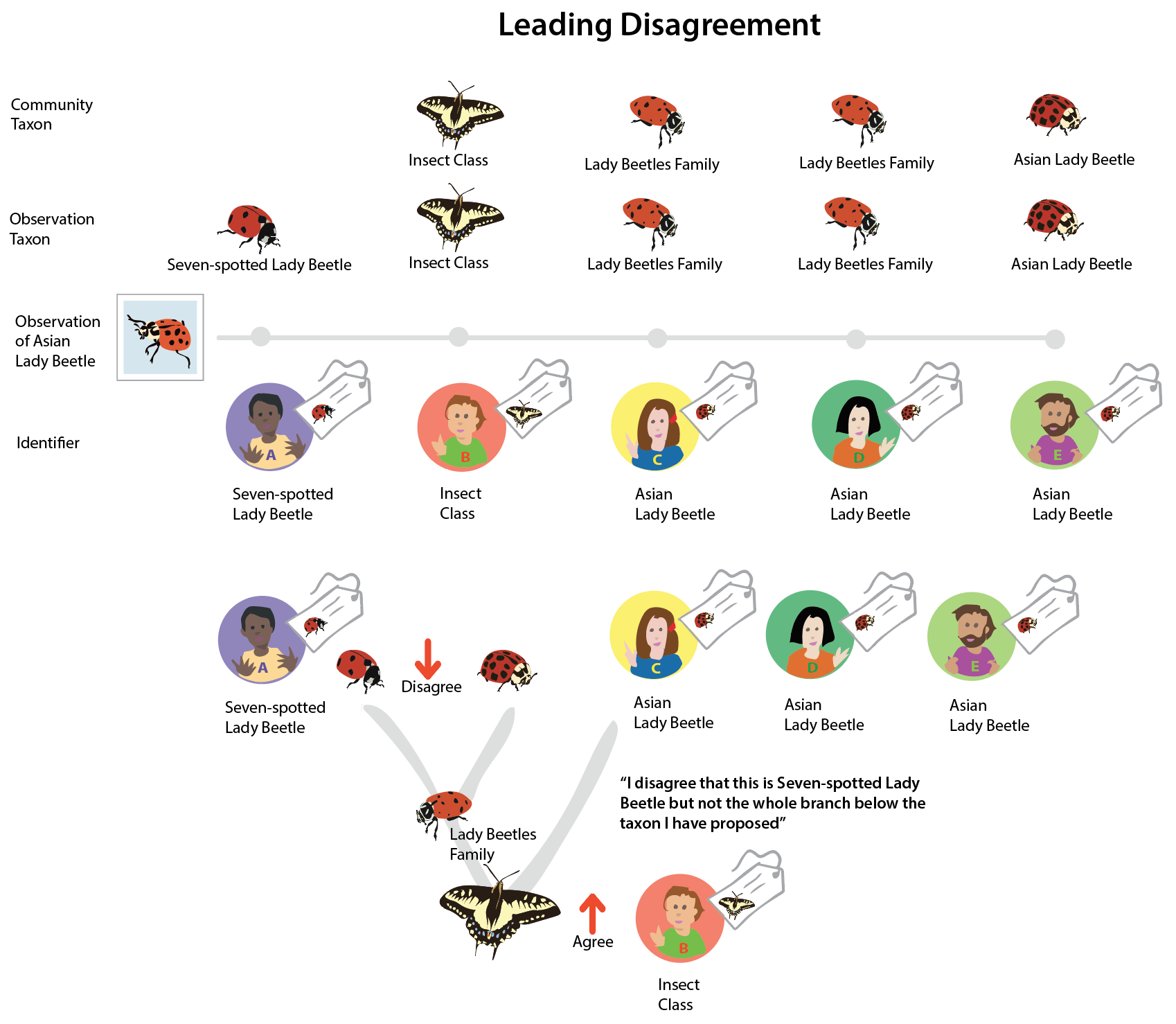
The site is currently assuming Branch Disagreement as it calculates the Community Taxon. We tried to capture the language for the Potential Disagreement question to distinguish "not disagreeing" with "branch disagreeing" as:

To more precisely capture how the Community Taxon was being calculated this could have been worded something like:
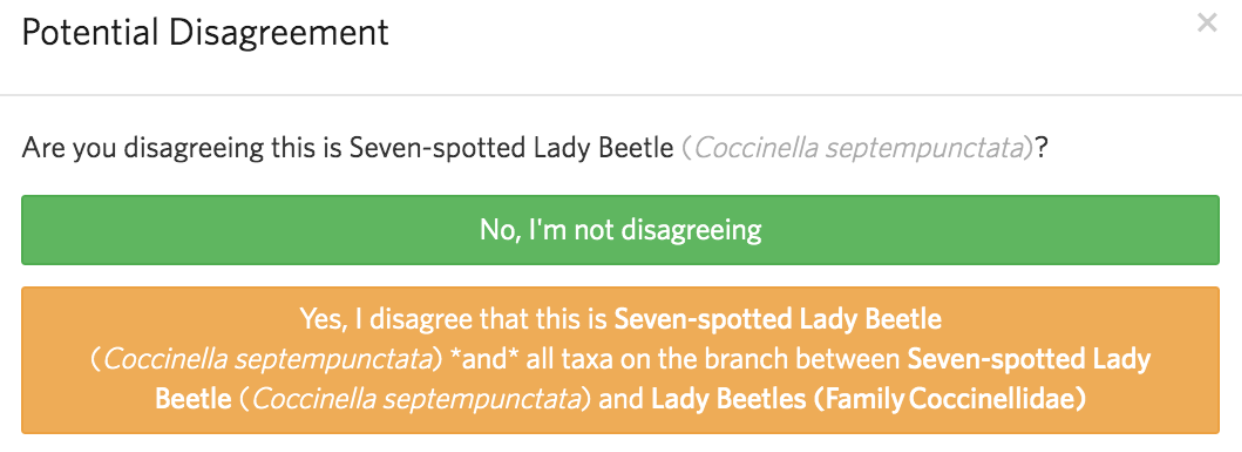
Likewise, Ancestor disagreement identifications could have been more precisely labeled something like the following to reflect how the Community Taxon is being calculated.

Planned changes to distinguishing the two ways to disagree
While we hope the above description will help clear up much of the confusion with how iNaturalist is handling explicit ancestor disagreements, we’ve also learned that these two ways of disagreeing (branch and leading) are distinct and both useful. While "leading disagreement" is clearly the most commonly-used way to disagree, we still think that "branch disagreement" is useful, particularly in enabling the community to stop observations from becoming too finely identified beyond where the community can be certain.
We’re working on changes that would enable identifiers to indicate which way (leading or branch) they are disagreeing. The Potential Disagreement prompt will have three questions:
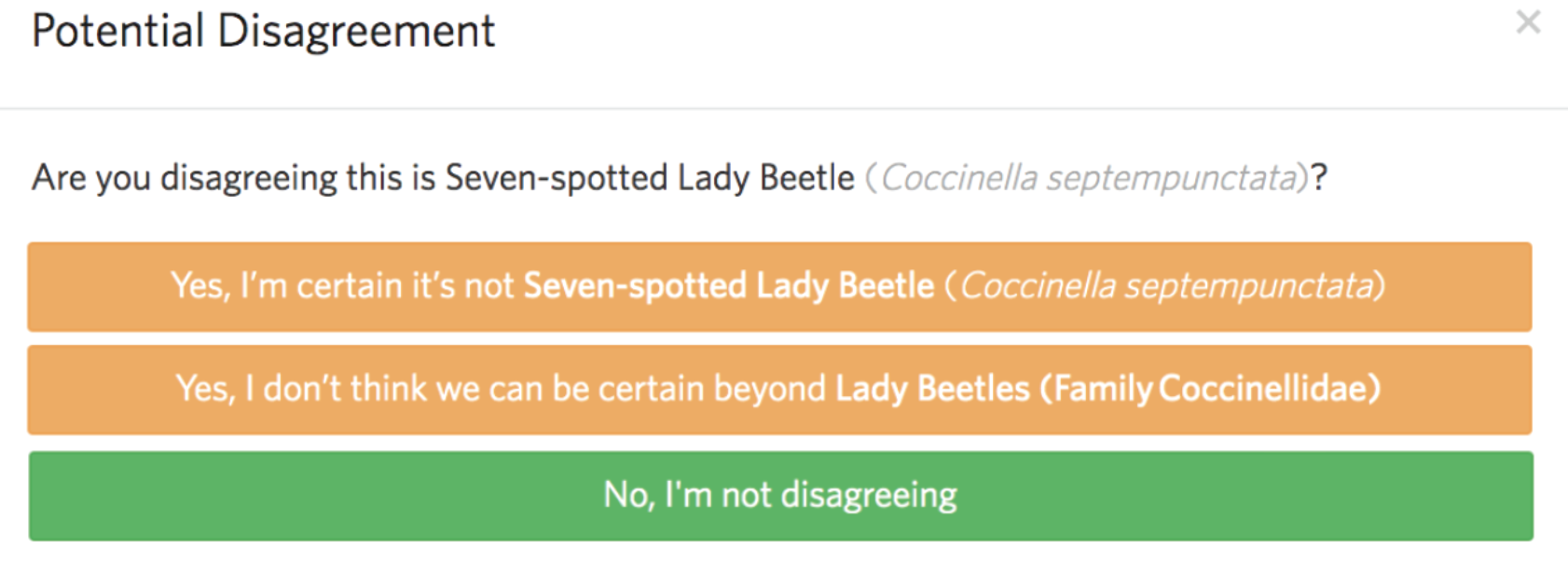
Here the first orange button would mean a "leading disagreement" and the second would mean a "branch disagreement".
Likewise, "leading disagreement" identifications will be decorated as:

and "branch disagreement" identifications will be decorated as:

Apologies for the length of this post, but we hope it clarifies some of the confusion about how the "ancestor disagreement" functionality is currently working and planned improvements to address concerns expressed in the forum.

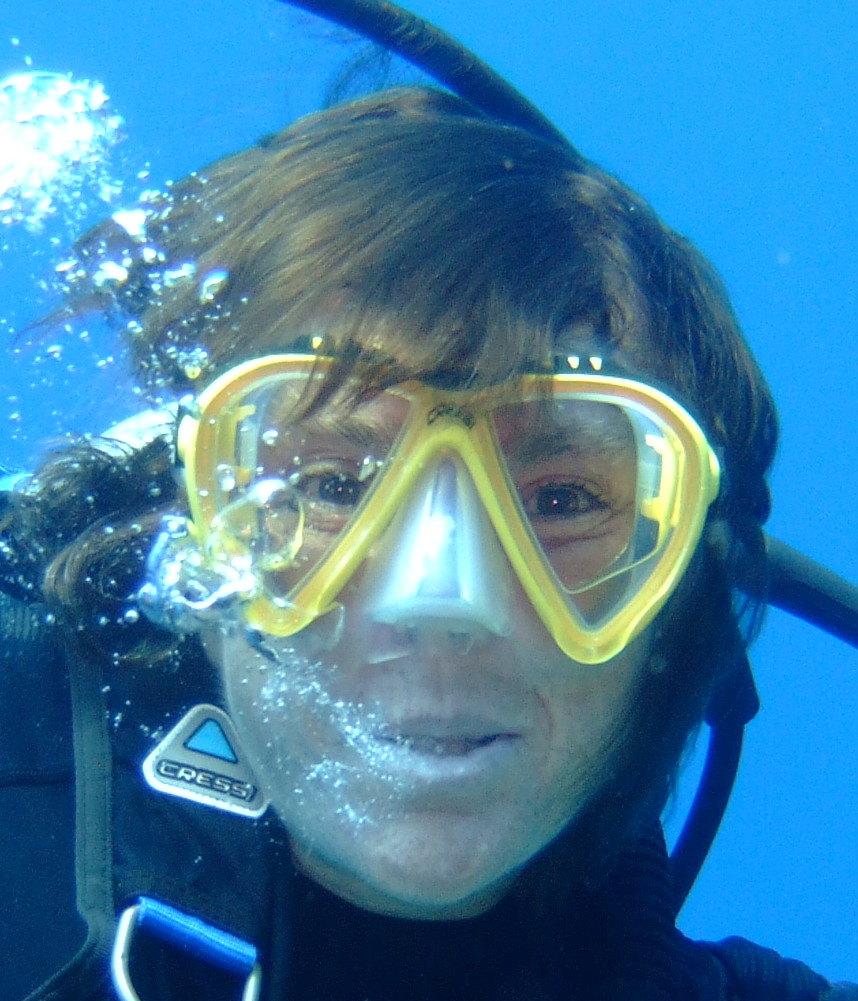




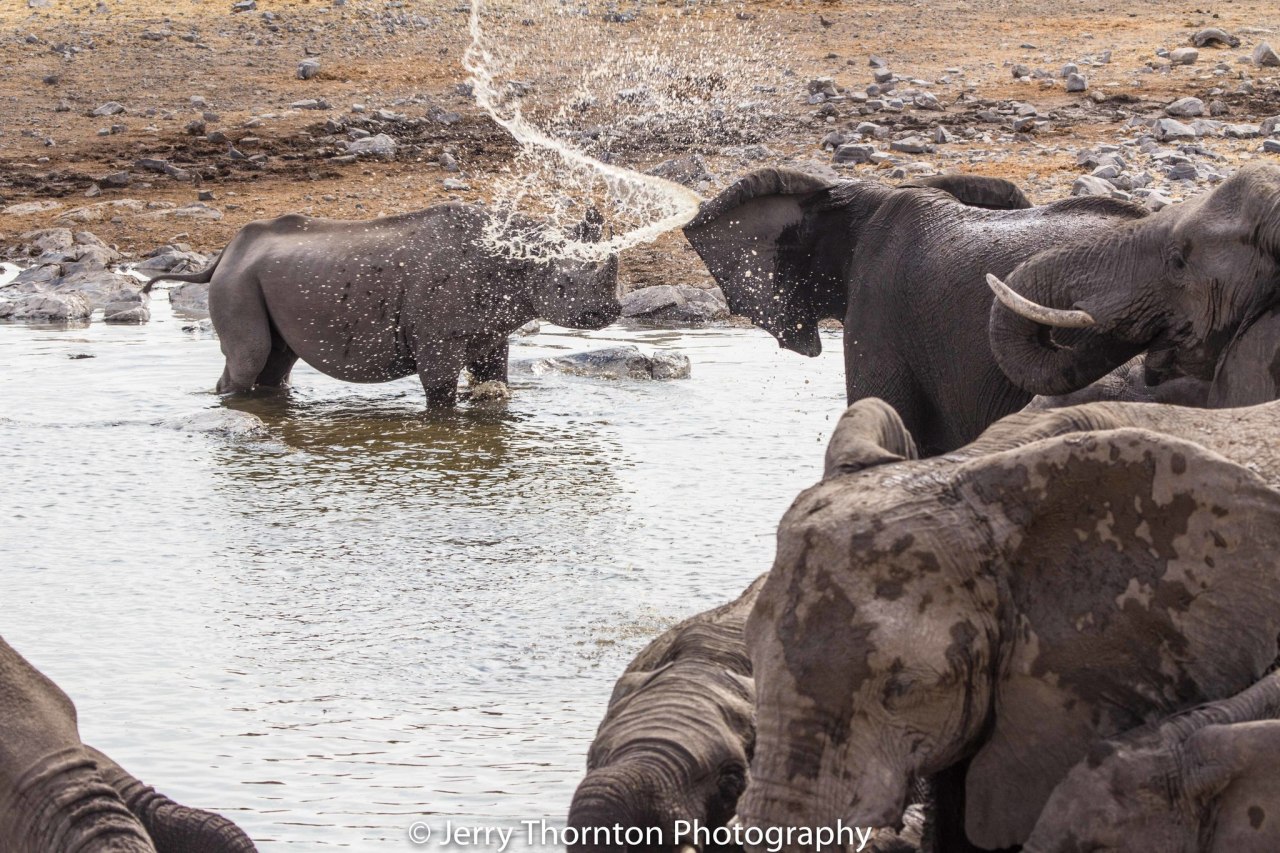
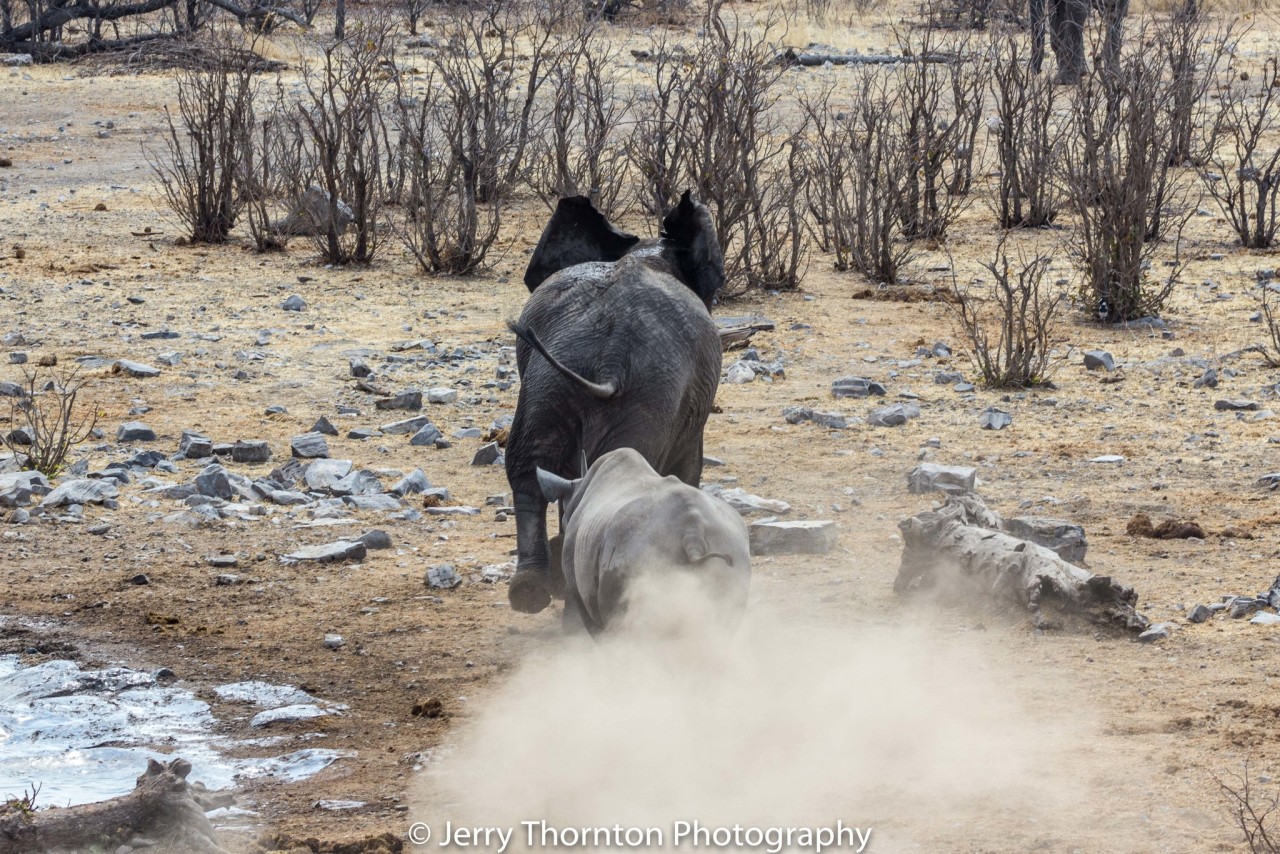 <?p>
<?p>






























